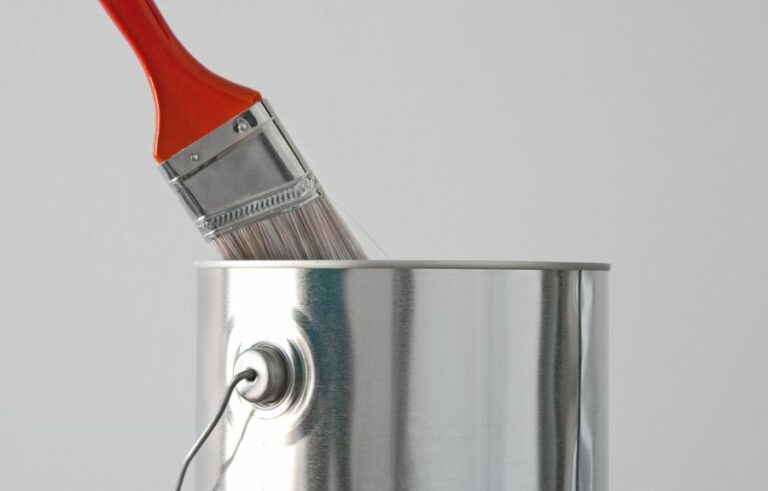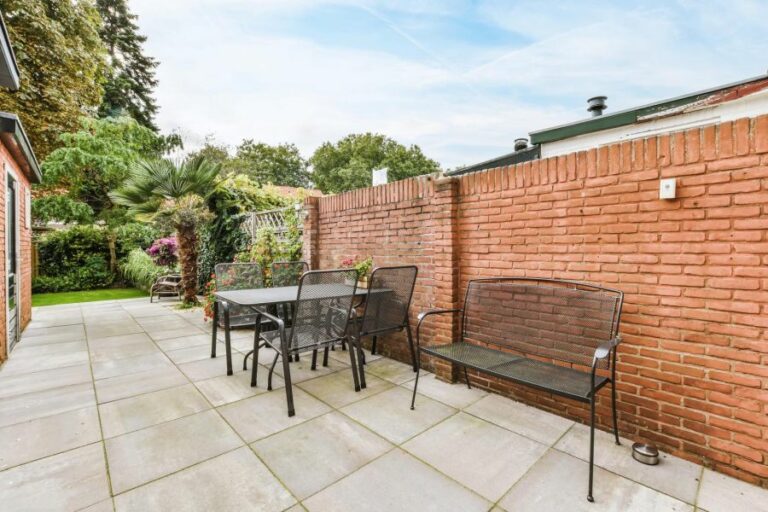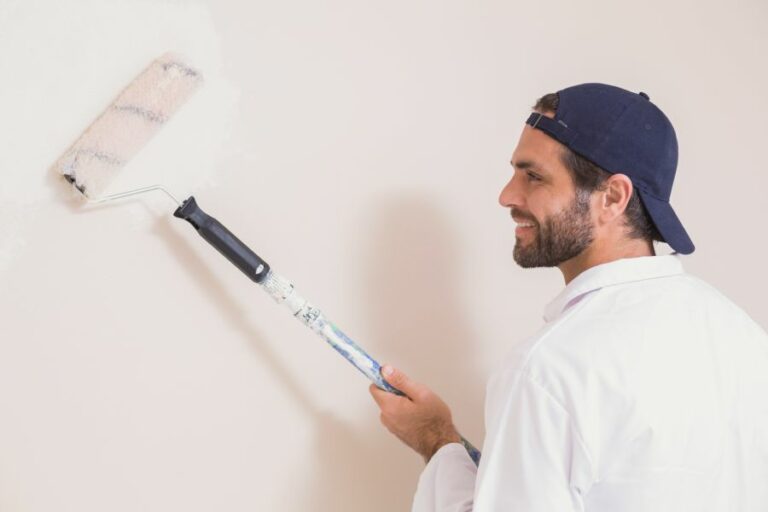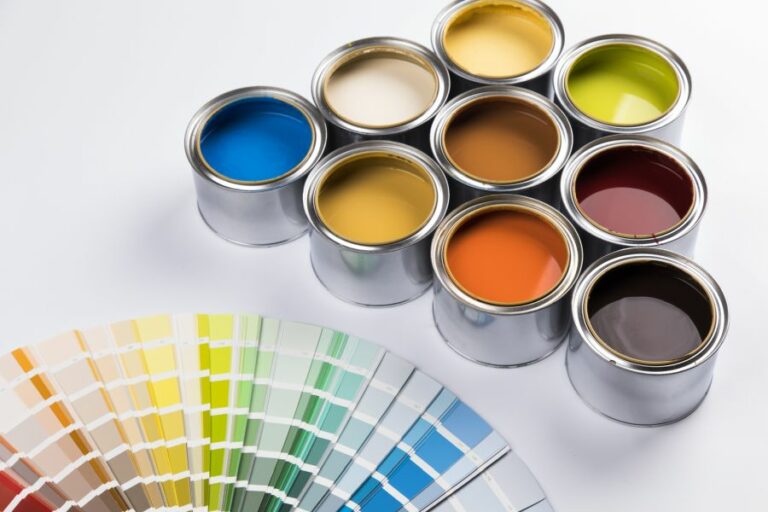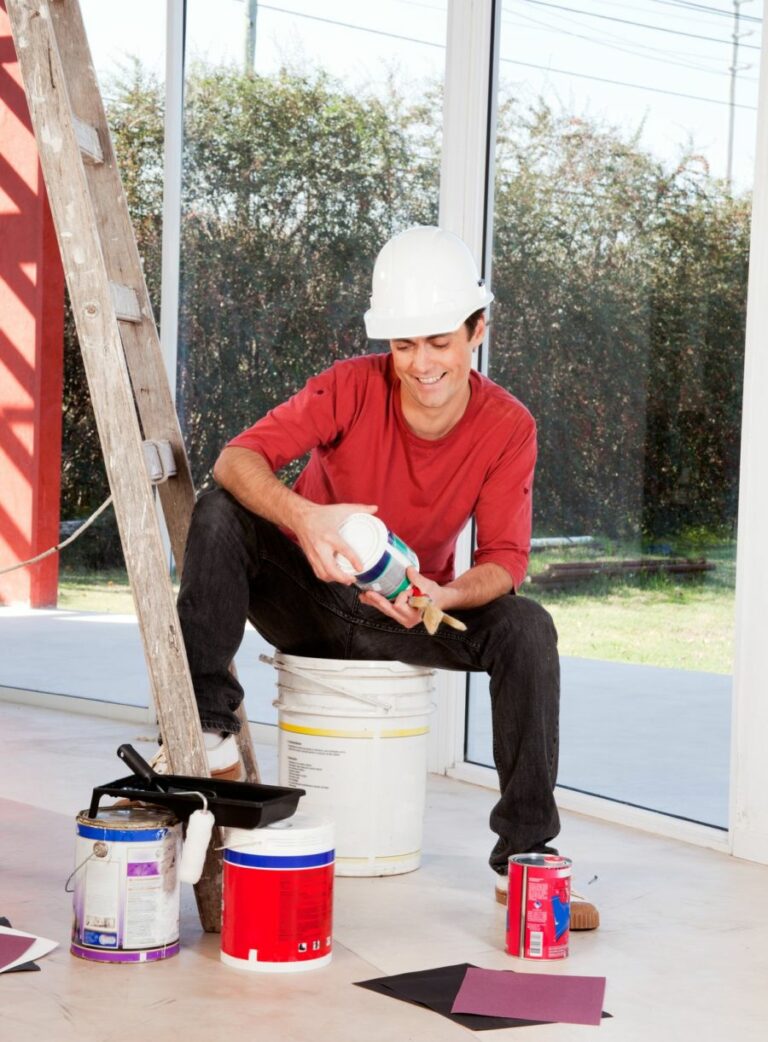Outdoor Fireplace Paint, 25 Things You Should Know
Are you looking to give your outdoor fireplace a fresh, new look, or simply want to protect it from the elements? You’ve come to the right place! With the right outdoor fireplace paint, I can help you transform your outdoor space into your dream oasis.
Outdoor fireplace paint:
To paint an outdoor fireplace, choose the right type of paint, such as high-temperature, high-heat enamel, or masonry paint. Prepare the surface by cleaning, removing dirt, and sanding loose paint. Apply a compatible primer, followed by the chosen paint according to the manufacturer’s instructions. Allow proper curing and drying, and maintain regularly to ensure longevity.
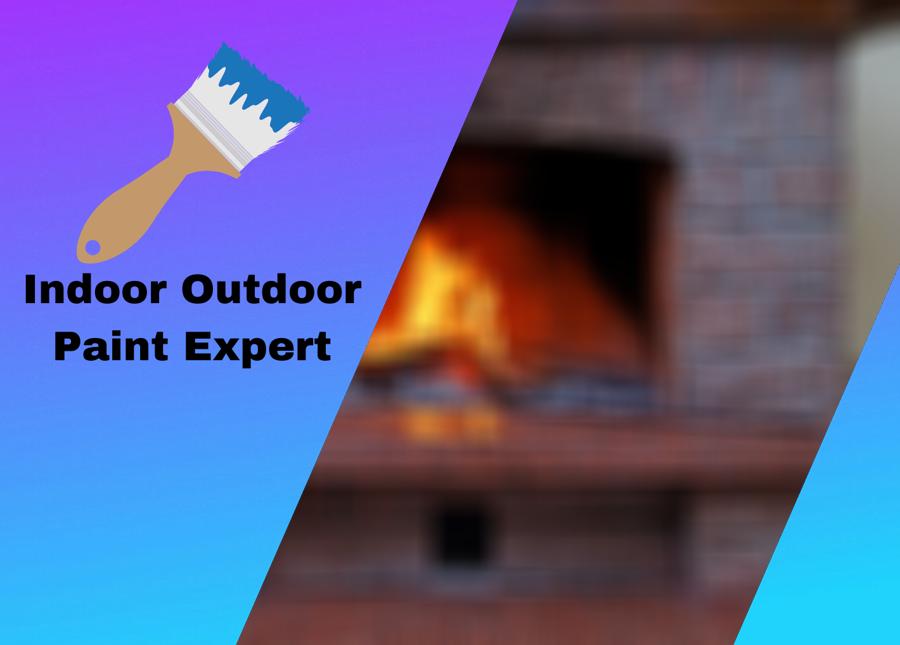
Discover the wonders of outdoor fireplace paint and how it can transform your space into a stunning oasis. Learn about its benefits, application tips, and the endless design potential it unlocks. Keep reading to unlock the secret to a cozy and inviting outdoor haven.
Contents
- 1 Exterior Fireplace Paint
- 2 What Type of Paint is Suitable for an Outdoor Fireplace?
- 3 Is it Possible to Apply Paint on the Exterior Surface of a Fireplace?
- 4 Is Heat-Resistant Paint Necessary for the Exterior Surface of a Fireplace?
- 5 Determining the Ideal Type of Paint for a Fireplace
- 6 Painting an Outdoor Fireplace: A Comprehensive Guide
Exterior Fireplace Paint
• Choosing the Right Type of Paint for Your Outdoor Fireplace
Creating a beautiful and stylish outdoor fireplace requires investing in the right type of paint that not only updates its look but also protects it from the elements.
Selecting a paint specifically designed for outdoor fireplaces and fire pits is essential. High-temperature paints also known as heat-resistant paints, are perfect for these applications as they can withstand extreme temperatures of around 1,200F (648C).
1. High-Temperature Paint
High-temperature paints are specifically formulated to withstand extreme heat. They are ideal for painting outdoor fireplaces, grills, and other high-heat applications.
These paints are available in both spray and brush-on varieties in different colors, including traditional black or metallic colors like copper, gold, and silver.
2. High-Heat Enamel Paint
High-heat enamel paints offer a smooth and glossy finish on surfaces exposed to high-temperature fluctuations. These paints also result in a polished look, which can effortlessly update an old and dull fireplace.
Moreover, high-heat enamel paints have excellent durability, chemical resistance, and color retention properties.
3. Masonry Paint
Masonry paint is another suitable option for outdoor fireplaces, as they are specifically formulated to cover and protect brick, stone, and other masonry materials. These paints come in various texture options and colors, providing a wide range of design possibilities.
This guide from the National Park Service offers a wealth of information on preserving masonry surfaces, including the proper selection and application of masonry paints.
• Tips for Painting Your Outdoor Fireplace
1. Preparing the Surface
Preparing the surface is a crucial step in achieving the desired finish and durability of the paint job. The surface preparation process can include cleaning, removing dirt, debris, mold, and mildew, as well as sanding away loose or peeling paint.
Use a wire brush or sandpaper to remove any old paint, followed by a thorough cleaning of the surface with a degreaser or mild detergent.
2. Using a Primer
For best results, apply a primer that is compatible with the type of paint you have chosen. A high-temperature primer is recommended for heat-resistant paints, while a masonry primer is suitable for masonry paint.
Primer helps in achieving an even and smooth finish by promoting better adhesion of the paint to the surface, ensuring maximum coverage and protection.
3. Applying the Paint
Follow the manufacturer’s instructions when applying the chosen outdoor fireplace paint. For high-temperature paints and high-heat enamel paints, it is important to ensure that the surface is fully cured before applying the paint, as these paints are heat-activated.
Brush-on paints can be applied with a high-quality natural bristle brush, whereas spray paints require a well-ventilated area and even strokes to achieve the desired coverage.
4. Allow for Proper Curing and Drying
Once the paint application is complete, let it cure and dry as per the manufacturer’s recommendations. Some high-temperature paints may require an initial heat cure process which involves lighting a fire in the fireplace to set the paint.
It’s important not to rush this process, as improper curing and drying can result in poor adhesion, uneven coloring, and diminished heat resistance.
• Maintaining Your Outdoor Fireplace Paint
Outdoor fireplaces are exposed to a range of weather conditions, which can affect the longevity of the paint job. Therefore, regular maintenance and care are necessary to keep your fireplace looking fresh and protected. Here are a few maintenance tips to ensure the paint lasts longer:
- Regularly clean the fireplace surface to remove dust, debris, and any build-up of creosote or soot, which can deteriorate the paint over time. A mild detergent and water mixture along with a soft-bristle brush should suffice in most cases.
- Inspect the outdoor fireplace for any signs of cracks, chips, or peeling paint. Promptly address any damages by cleaning the affected area and applying a fresh coat of paint.
- Cover your outdoor fireplace during extreme weather conditions, such as heavy rain or snow, to protect it from excess moisture and water damage.
In conclusion, updating the aesthetics of your outdoor fireplace with a fresh coat of paint can have a significant impact on your outdoor living space. Choosing the right type of paint, proper preparation, application techniques, and regular maintenance are key to a successful and long-lasting paint job.
What Type of Paint is Suitable for an Outdoor Fireplace?
An outdoor fireplace can be a beautiful and functional addition to your backyard or patio. When choosing the right paint for your outdoor fireplace, it’s essential to consider factors like durability, heat resistance, and environmental factors.
• High-Temperature Paint: A Must for Outdoor Fireplaces
One of the primary requirements for outdoor fireplace paint is its ability to handle high temperatures. Fireplaces generate intense heat that can cause regular paint to crack, peel, or change color.
Hence, choosing a high-temperature paint designed for metal (also known as stove paint) is crucial for both aesthetic and practical reasons.
These types of paint are formulated to withstand temperatures up to 1200F (648C) without losing their adhesion or structural integrity. Most high-temperature paint products are spray-on, making them easy to apply and ensuring even coverage.
Common brands that offer quality high-temperature paints include Rust-Oleum, Krylon, and VHT.
– Rust-Oleum High Heat Spray Paint
I recommend Rust-Oleum High Heat Spray Paint for its durability and resistance under extreme temperatures. This paint is designed to withstand temperatures up to 1200F (648C) and provides a long-lasting protective layer for your outdoor fireplace.
Moreover, Rust-Oleum’s paint is available in various colors, so you can customize the appearance of your fireplace to match your desired aesthetic.
• Masonry Paint: Ideal for Brick and Concrete Fireplaces
If your outdoor fireplace is made from brick or concrete, masonry paint can be an excellent option. Masonry paint is formulated with binders and additives that help it adhere to porous surfaces like brick and concrete, providing a durable, waterproof finish.
These types of paint can also withstand temperature fluctuations and UV exposure, which are crucial factors to consider for an outdoor fireplace.
While masonry paint is not specifically designed for high-temperature environments, most masonry paints can handle moderate heat, making them suitable for fireplaces with limited direct exposure to flames.
– BEHR Premium Elastomeric Masonry Paint
My recommendation for a high-quality masonry paint is BEHR Premium Elastomeric Masonry, Stucco, and Brick Paint. This product offers excellent durability, weather resistance, and flexibility, making it perfect for outdoor fireplaces made from brick or concrete.
Its elastomeric properties allow the paint to expand and contract with temperature changes, reducing the risk of cracks or damage. More information on the BEHR Premium Elastomeric Masonry paint can be found here.
• Heat Resistant Primer: A Key Prep Step
Before applying any high-temperature or masonry paint, it’s essential to use a heat-resistant primer on your outdoor fireplace. A heat-resistant primer provides a strong, heat-tolerant foundation that ensures your paint will adhere properly to the surface and withstand high temperatures.
Some high-temperature paints already include a primer in their formulation, but it’s always good to double-check and apply a separate heat-resistant primer if needed.
– VHT Flameproof Primer
I recommend using VHT Flameproof Primer, a high-performance primer specifically designed for surfaces that will be exposed to high temperatures.
This product offers excellent adherence and heat resistance, ensuring your paint job lasts and endures the heat generated by your outdoor fireplace. More information on VHT Flameproof Primer can be found here.
• Environmentally-Friendly Paints: A Greener Option
If you’re looking for a more environmentally-friendly paint option for your outdoor fireplace, consider choosing low-VOC (volatile organic compounds) or water-based paint.
These paints emit less harmful chemicals into the atmosphere than their solvent-based counterparts and are less harmful to the environment.
While low-VOC and water-based paints may not offer the same temperature resistance as high-temperature or masonry paints, some options on the market are specifically designed for high-heat environments.
Ensure you check the product’s specifications and choose a paint with the appropriate level of heat resistance for your needs.
– ECOS Paints High Heat Resistant Paint
One environmentally-friendly, high-heat-resistant paint product I recommend is ECOS Paints High Heat Resistant Paint. This product is specifically designed for high-temperature applications and offers low VOC content, making it an excellent eco-friendly option for your outdoor fireplace.
• Conclusion
Selecting the right paint for your outdoor fireplace is essential to ensure a long-lasting, durable, and aesthetically pleasing result.
High-temperature paints, masonry paints, heat-resistant primers, and environmentally-friendly options all offer unique benefits, so consider your fireplace’s material, expected temperature exposure, and personal preferences when making your decision.
With the right paint and proper preparation, your outdoor fireplace can provide years of enjoyment and warmth while enhancing your outdoor space’s beauty.
Type of Paint | Description | Recommended Use |
|---|---|---|
High-Temperature Paint | Heat-resistant paint capable of withstanding high temperatures (up to 1200F/648C). Comes in various colors and finishes. | Recommended for outdoor fireplace surfaces that are exposed to high heat. |
Acrylic Latex Paint | Water-based paint with excellent durability, adhesion, and resistance to fading and chipping. Available in a variety of colors and finishes. | Suitable for outdoor fireplace surfaces not exposed to high heat. Ideal for the exterior surface of a fireplace. |
Masonry Paint | A special type of paint designed specifically for masonry surfaces like bricks, stones, and concrete. Provides a long-lasting and waterproof finish. | Recommended for outdoor fireplaces made from brick or other masonry materials. |
Is it Possible to Apply Paint on the Exterior Surface of a Fireplace?
Painting the outside of a fireplace can provide a fresh new look to the room and even the entire house. However, it is essential to consider various factors such as the type of paint, the material of the fireplace, surface preparation, and proper application technique.
• The Importance of Choosing the Right Paint
When it comes to painting the exterior of a fireplace, the type of paint you choose is crucial. The paint must be able to withstand high temperatures and provide long-lasting protection to the surface.
- Heat-resistant paint: This type of paint is specifically designed to withstand high temperatures, usually up to 1200-1400 degrees Fahrenheit (650-760 degrees Celsius). Heat-resistant paints are commonly used for fireplaces, stoves, and other heating appliances. The Environmental Protection Agency (EPA) recommends using low VOC (Volatile Organic Compound) paints for better indoor air quality.
- Masonry paint: If your fireplace is made of brick or stone, you should consider using masonry paint. This type of paint is formulated to provide excellent adhesion and durability on masonry surfaces. It also helps in covering minor cracks and preventing water penetration.
• Preparing the Surface for Painting
Proper surface preparation is crucial for achieving a durable and high-quality paint finish. The following steps will ensure that your fireplace is ready for painting.
1. Clean the surface
Before painting the fireplace, thoroughly clean its surface to remove dirt, soot, and any other debris. Use a vacuum cleaner with a brush attachment to get rid of loose dust. For more stubborn dirt, use a mixture of warm water and mild detergent.
Scrub the surface gently using a soft-bristle brush or sponge. After cleaning, rinse with clean water and allow the surface to dry completely.
2. Repair damages
Inspect your fireplace for any cracks, chips, or other damages that need repair. Use a masonry patching material or caulk to fill minor cracks or gaps. For larger damages, consult a professional for proper guidance and repair.
3. Sand the surface
If your fireplace has a painted or glossy surface, it is necessary to sand it lightly to improve the adhesion of the new paint. Use fine-grit sandpaper (120-150 grit) and gently sand the surface, focusing on rough edges and uneven areas. After sanding, use a soft brush or cloth to remove the dust.
4. Apply a primer
Priming the surface before painting ensures better paint adhesion and an even paint finish. Choose a heat-resistant primer or a masonry primer, based on the type of paint you have selected.
Apply the primer evenly, following the manufacturer’s instructions. Allow the primer to dry thoroughly, as recommended by the manufacturer.
• Painting the Fireplace’s Exterior
Once the surface is prepared, you can begin painting your fireplace. Follow these steps to achieve professional-looking results.
1. Choose the right tools
Selecting the appropriate painting tools is essential for a smooth and even paint finish. For a fireplace with a smooth surface, use a high-quality, heat-resistant roller.
For brick or stone fireplaces, opt for a paintbrush with stiff bristles or a paint sprayer, as these can help you reach the crevices and uneven surfaces.
2. Apply the paint
Stir the paint well before using it. Start painting from the top and work your way down, applying the paint in small sections. Be sure to apply the paint evenly, avoiding drips and puddles. For the best coverage, apply two or more coats, allowing each coat to dry as per the manufacturer’s instructions.
3. Ensure proper ventilation
While painting, ensure that the room is well-ventilated. Open windows and doors, and use fans to circulate air. Proper ventilation helps in faster drying and reduces the risk of inhaling toxic fumes.
• Maintenance Tips for a Painted Fireplace
Here are some essential maintenance tips to keep your painted fireplace looking fresh and new:
- Regularly clean the fireplace’s exterior using a soft cloth or vacuum cleaner with a brush attachment.
- Avoid using harsh chemicals or abrasives for cleaning. Instead, use mild detergents and a soft-bristle brush.
- Inspect your fireplace periodically for damages, and repair them as needed.
- If the paint begins to peel or crack over time, sand the affected area gently and apply a new coat of heat-resistant paint for a fresh look.
In conclusion, painting the exterior of a fireplace can significantly improve its appearance and enhance your home’s decor. By choosing the right paint, preparing the surface properly, and following the recommended application techniques, you can achieve a professional and long-lasting paint finish.
Is Heat-Resistant Paint Necessary for the Exterior Surface of a Fireplace?
When it comes to maintaining the safety and aesthetics of your fireplace, using the appropriate paint is crucial. One type of paint that is specifically designed for the exterior of fireplaces is heat-resistant paint. But do you really need heat-resistant paint for the outside of your fireplace? In short, the answer is yes.
• Why Heat Resistant Paint is Necessary for Your Fireplace
As the name suggests, heat-resistant paint is formulated to withstand high temperatures, which is especially important for fireplaces as they can reach temperatures of up to 2000°F.
Traditional paint may lack the ability to cope with these extreme heat fluctuations, leading to blistering, peeling, and eventually exposing the surface beneath, which may pose fire hazards.
By using heat-resistant paint on the exterior of your fireplace, you can prevent these issues from occurring, ensuring both the safety and longevity of your fireplace.
Moreover, heat-resistant paint protects your fireplace against rust, corrosion, and damage caused by moisture, thereby prolonging its lifespan.
• Types of Heat Resistant Paint for Fireplaces
There are two main types of heat-resistant paint suitable for fireplaces: silicone-based and water-based. Both types share similar properties in terms of resisting heat and providing durability, but they differ in some ways.
– Silicone-Based Heat Resistant Paint
Silicone-based heat-resistant paint is an oil-based product that is known for its exceptional durability and heat resistance. It is capable of withstanding temperatures up to 1200°F and offers a high-gloss finish which is ideal for preventing rust and corrosion.
Because of its resistance to wear, including exposure to UV rays, silicone-based paint is often recommended for external use.
– Water-Based Heat Resistant Paint
Water-based heat-resistant paint is an environmentally friendly option with low VOC (volatile organic compounds) emissions. Water-based paint provides a smooth, matte finish and can withstand temperatures up to 1000°F.
Due to its ability to dry quickly and clean up easily with water, it is popular among DIY enthusiasts.
Both types of heat-resistant paint can effectively protect the exterior of your fireplace, so it comes down to personal preference and the specific needs of your fireplace in terms of temperature resistance, finish, and environmental impact.
• Key Factors to Consider When Choosing Heat-Resistant Paint for Your Fireplace
Before purchasing heat-resistant paint, it is important to consider the following factors:
– Temperature Resistance
As previously mentioned, different heat-resistant paints offer varying levels of temperature resistance. Thus, it is important to determine the maximum temperature your fireplace can reach and choose a paint that can withstand that temperature.
Refer to your fireplace manufacturer’s manual or consult a professional for guidance.
– Aesthetic Preferences
Consider the color and finish you desire for your fireplace’s exterior. Heat-resistant paint is available in a range of colors and finishes, from matte to glossy. Keep in mind that some finishes may be better suited for outdoor fireplaces due to their ability to resist UV rays and wear.
– Application Process
The application process may vary depending on the type of heat resistant paint you choose. For example, some paints may require the use of a primer or undercoat, while others can be applied directly to the surface.
Read the manufacturer’s instructions carefully to ensure proper application and optimal results.
– Budget
Lastly, consider your budget when choosing heat-resistant paint. While it may be tempting to opt for cheaper paint, investing in a high-quality product will provide better protection and longevity for your fireplace.
• Proper Preparation and Application of Heat Resistant Paint
To achieve the best results when painting the exterior of your fireplace, follow these steps:
- Clean the surface of your fireplace thoroughly, removing any dirt, dust, and debris.
- If your fireplace has existing paint that is peeling or in poor condition, use a wire brush or paint scraper to remove it.
- Apply a high-quality primer (if required) and allow it to dry completely.
- Apply the heat-resistant paint using a brush or roller, following the manufacturer’s instructions for the number of coats needed and the drying time between coats.
- Allow the paint to cure completely before using your fireplace.
In conclusion, using heat-resistant paint for the exterior of your fireplace is essential to ensuring its durability, safety, and aesthetic appeal.
By considering factors such as temperature resistance, aesthetic preferences, the application process, and budget, you can choose the right heat-resistant paint and enjoy a beautifully protected fireplace for years to come.
For further guidance on this topic, refer to resources provided by reputable organizations such as the National Fire Protection Association.
Question | Answer |
|---|---|
Do you need heat-resistant paint for outside of fireplace? | Yes, using heat-resistant paint for the outside of a fireplace is recommended to protect the surface and maintain its appearance. |
Determining the Ideal Type of Paint for a Fireplace
Fireplaces are an essential part of many homes, providing warmth, comfort, and a focal point in a room. If your fireplace looks worn or outdated, applying a fresh coat of paint can breathe new life into it.
Painting a fireplace requires careful consideration when it comes to selecting the appropriate type of paint.
• High-Temperature Paint: A Must for Fireboxes and Heat-Resistant Surfaces
The firebox is the area within the fireplace where the actual fire burns. Due to its exposure to extremely high temperatures, it’s crucial to use a paint specifically designed for these conditions.
High-temperature paint, also known as heat-resistant paint, is engineered to withstand heat up to a specific temperature, usually around 1,200-2,000°F (650-1,100°C).
Most high-temperature paints are also resistant to chipping, cracking, and fading, ensuring your fireplace maintains its color and appearance for a long time.
For a highly recommended high-temperature paint, consider Rutland Fireplace Paint, which is designed to withstand heat up to 1,200°F (650°C) and is available in a variety of colors to suit your desired aesthetic.
When painting the firebox, it’s important to choose a flat or matte paint finish, as glossy finishes may not hold up as well in high-heat situations. Additionally, ensure the paint is rated for use on the specific material of your firebox, such as brick, metal, or stone.
– Application Tips and Safety Considerations
Before applying high-temperature paint, thoroughly clean the firebox to remove any soot, ash, or dirt. A stiff brush and a heavy-duty cleaner like TSP (trisodium phosphate) can be effective for this task. After cleaning, allow the area to dry completely before painting.
Be sure to follow the manufacturer’s instructions for applying the paint, including any necessary prep work, primer, or curing steps.
In some cases, it may be necessary to apply a high-temperature primer before painting, especially if your firebox contains rust or has been previously painted with non-heat-resistant paint.
Lastly, always practice proper ventilation and wear a respirator when painting a firebox, as high-temperature paint can release harmful fumes.
• Latex and Acrylic Paint for Fireplace Surrounds and Mantels
The fireplace surround and mantel are the decorative elements that frame the firebox. These areas typically do not come into direct contact with high heat, allowing for more versatility in paint options.
Both latex and acrylic paint are suitable for painting the surround and mantel, with each offering its own benefits.
– Latex Paint: Low VOCs and Easy Cleanup
Latex paint is water-based and has relatively low levels of volatile organic compounds (VOCs), making it a more environmentally friendly option. Latex paint is also easier to clean up, requiring only soap and water for cleanup.
This type of paint dries quickly and is commonly available in a wide range of colors and finishes. As with any paint job, consider using a primer before applying latex paint, especially if you’re covering a dark or stained surface.
– Acrylic Paint: Durability and Improved Adhesion
Acrylic paint is a type of water-based paint that contains additional resins, which improve its durability and adhesion properties. This means that acrylic paint is less likely to peel, crack, or fade over time, making it an excellent option for high-traffic areas like fireplace surrounds and mantels.
Because acrylic paint is similar to latex paint in terms of its application and cleanup process, many people opt for the slightly more durable acrylic choice.
When painting a surround or mantel, choose a finish that complements the overall style of your room. Flat and matte finishes are great for a more traditional look, while semi-gloss and glossy finishes can add a modern touch.
– Prepping and Painting the Surround and Mantel
Before painting, it’s important to properly prepare the surface for optimal adhesion and to ensure an even finish. Begin by cleaning the surface with a mild detergent and water, then allow it to dry completely.
If the surface has any chips or cracks, use a filler or putty to repair them, then sand the area smoothly.
For the best results, use a quality primer before painting, especially if you are covering a dark or stained surface. Follow the manufacturer’s instructions for applying the paint, typically using a brush or roller for smooth, even coverage.
In conclusion, selecting the appropriate type of paint is crucial when updating a fireplace. High-temperature paint is a must for fireboxes and heat-resistant surfaces, while latex and acrylic paint are suitable for fireplace surrounds and mantels.
Be sure to properly prepare the surface, choose a suitable finish, and practice proper ventilation for a long-lasting, professional result.
Type of Paint | Description | Benefits |
|---|---|---|
High-Temperature Paint | Designed to withstand high temperatures, typically up to 1200°F (649°C). | Provides a durable and heat-resistant finish, ideal for fireplaces and heat-exposed surfaces. |
Latex Paint | Water-based paint that is commonly used for interior walls and surfaces with low heat exposure. | Easy to apply, clean up, and dries quickly. Not suitable for high-temperature surfaces. |
Heat-Resistant Primer | A primer specifically designed for high-temperature environments, such as fireplaces. | Prevents paint from peeling and chipping due to heat exposure. Prolongs the life of the topcoat. |
Masonry Paint | Designed for use on brick, stone, and other masonry surfaces. | Provides a durable, weather-resistant finish. Not suitable for high-temperature surfaces. |
Painting an Outdoor Fireplace: A Comprehensive Guide
An outdoor fireplace can add warmth and charm to your patio or backyard, creating a cozy gathering space for friends and family. Over time, though, your fireplace may start to show signs of wear and tear, with the paint chipping or peeling away.
Can you paint an outdoor fireplace? The answer is a resounding yes, and this comprehensive guide will walk you through the process.
• Benefits of Painting Your Outdoor Fireplace
There are several reasons why you might consider painting your outdoor fireplace:
- Aesthetic appeal: A fresh coat of paint can enhance the appearance of your fireplace, making it look new and well-maintained.
- Protection: Painting the fireplace can help protect it from the elements, shielding it from rust and corrosion, which over time, can weaken the structure.
- Personalization: By painting your fireplace, you can customize its look to match your overall dcor or simply add a pop of color to your outdoor space.
• Choosing the Right Paint for Your Outdoor Fireplace
Before you begin the painting process, it’s crucial to select the right type of paint. Your outdoor fireplace will likely be exposed to high temperatures, so you’ll need paint that can withstand the heat. High-temperature paint, also known as heat-resistant or heatproof paint, is the ideal choice for this purpose.
Consider choosing a paint that’s specifically designed for outdoor use, as it will likely have added UV and weather-resistant properties. These paints are often available in a variety of colors, so you’ll have no problem finding the perfect shade for your fireplace.
It’s essential to follow the manufacturer’s recommendations regarding the application process and necessary safety precautions.
For a non-commercial resource on heat-resistant paints and their properties, visit the National Institute of Standards and Technology (NIST) website and search for “heat-resistant paint.”
• Preparing Your Outdoor Fireplace for Painting
Before you can apply your chosen paint, it’s essential to prepare the surface of your outdoor fireplace. Proper preparation will help ensure a smooth and durable finish. Follow these steps to get your fireplace ready for its new coat of paint:
– Cleaning the Fireplace
First, remove any debris, dust, or dirt from the surface of the fireplace. If there’s mildew or mold present, use a mixture of water and bleach to clean it thoroughly. Be sure to rinse the area with water to remove any residue before letting it dry completely.
– Assessing and Repairing Damage
Next, examine the fireplace for any cracks, chips, or other damage. If you find any issues, repair them with a suitable mortar or masonry product, following the manufacturer’s instructions. Allow any repairs to dry and cure as recommended.
– Removing Old Paint
If your outdoor fireplace has been painted previously, it’s crucial to remove any loose or peeling paint. You can do this using a wire brush or paint scraper. Follow up by sanding the surface with medium-grit sandpaper to create a smooth, even surface for the new paint to adhere to.
– Applying a Primer
Before applying the paint, it’s essential to prime the surface of your fireplace. A high-temperature primer designed for outdoor use is necessary in this case. Apply the primer evenly, following the manufacturer’s instructions, and allow it to dry completely before proceeding with the paint application.
• Applying the Paint to Your Outdoor Fireplace
With your outdoor fireplace cleaned, repaired, and primed, you’re ready to apply your chosen high-temperature paint. Follow these steps for a successful, long-lasting finish:
– Safety Precautions
Ensure proper ventilation in the area where you’ll be working, as high-temperature paints often emit strong fumes. Protect your eyes and hands by wearing safety glasses and gloves during the painting process. Additionally, keep any open flames and heat sources away from the paint and primer.
– Applying the Paint
Using a brush or roller, apply the paint evenly to the prepared surface of your outdoor fireplace, taking care to avoid drips and streaks. It’s often best to work in thin layers, allowing each to dry according to the manufacturer’s recommendations before applying another.
This will result in a more durable and even finish.
– Drying and Curing
Once you’ve applied the final coat of paint, allow it to dry completely based on the manufacturer’s instructions. Keep in mind that high-temperature paints may require a longer drying time or specific curing conditions.
Consult the manufacturer’s guidelines for the appropriate amount of time and temperature needed for the paint to cure fully.
• Final Considerations and Maintenance Tips
With your outdoor fireplace freshly painted and looking its best, it’s essential to maintain it properly to ensure the longevity of the paint job. Here are some tips to help you care for your newly-painted fireplace:
- Clean regularly: Sweep away ash and debris regularly to prevent buildup that can damage the paint.
- Inspect for damage: Periodically check for cracks or chips in the paint and make any necessary touch-ups to prevent further deterioration.
- Cover when not in use: Consider using a weatherproof cover for your outdoor fireplace when it’s not in use to protect the surface from rain, snow, and other elements that can cause the paint to break down over time.
By following this comprehensive guide, you’ll be able to successfully paint your outdoor fireplace and enjoy the beauty and warmth it brings to your outdoor living space for years to come.
Answer | Explanation |
|---|---|
Yes | You can paint an outdoor fireplace, but you will need to use special heat-resistant paint that can withstand high temperatures. It is also important to clean and prep the surface properly before painting to ensure good adhesion and durability. |

